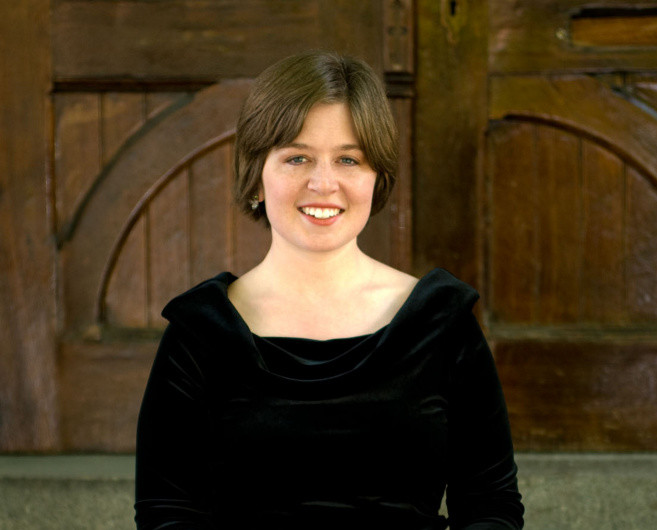Anastasia Antonacos, a pianist on the faculty of the University of Southern Maine and a frequent recitalist, chamber player and concerto soloist hereabouts, presented a brief but compelling recital at the First Parish Unitarian Universalist Church on Thursday afternoon. The program, an installment in the Portland Conservatory of Music’s free Noonday Concert Series, included two recent Preludes by Elena Ruehr, Schubert’s Impromptu in A flat (D. 935, No. 2) and four of the six movements of Ravel’s “Tombeau de Couperin.”
At first hearing, the most salient feature of Antonacos’ playing is the attention she brings to balance. In her rendering of the Schubert, for example, the simple opening was elegantly and evenly voiced, and phrased with the kind of inviting dynamic flexibility that makes a piece of music seem to breathe, when it could just as easily seem inert.
Antonacos’ approach to balance and phrasing yielded another crucial quality as well – textural transparency. The agitated middle section of the Schubert can be dense and hard-driven, and if the reading is exciting enough, you don’t necessarily care about the details of Schubert’s harmonic changes. Antonacos, who is also on faculty with the Portland Conservatory of Music, took a different approach – no less driven or even steely, at times, than other players, but with a crystalline quality that put the work’s harmonic invention in the spotlight.
Much the same could be said about Antonacos’ reading of the burbling Prelude of the Ravel, and if her rendering of the suite’s Fugue sounded squarely mechanistic, that seemed a choice – an odd one, given the shapeliness of her playing elsewhere – rather than negligence or inattention. The Rigaudon, too, seemed out of character, at least at the start: Antonacos played it so briskly and assertively that the shape of the opening figure, with its emphatic punctuating chords, seemed almost lost. She recalculated as the movement proceeded, though, and when that figure returned at the end, it had its full measure of jauntiness and character.
The Ruehr selections, with which Antonacos began, were concise but picturesque, and along with the encore, a selection from Einojuhani Rautavaara’s “Icons,” gave the program a contemporary frame. Ruehr, who lives in Boston, was born in 1963, and in addition to her composition studies at the University of Michigan and the Juilliard School, she studied dance, Javanese gamelan, and West African music.
The first of the two pieces Antonacos played, “solitary figure at water’s edge…,” bore a vague trace of Ruehr’s world music studies in its unassuming, melody, played so far into the piano’s upper register that they sounded almost toneless and percussive – a striking contrast with the gauzy, gently dissonant accompanying figures. The second, “…a storm approaches land,” was more conventional, an energetic piece with a Ravelian shimmer.
Allan Kozinn is a former music critic and culture writer for The New York Times who lives in Portland. He can be contacted at:
allankozinn@gmail.com
Twitter: kozinn
Send questions/comments to the editors.



Success. Please wait for the page to reload. If the page does not reload within 5 seconds, please refresh the page.
Enter your email and password to access comments.
Hi, to comment on stories you must . This profile is in addition to your subscription and website login.
Already have a commenting profile? .
Invalid username/password.
Please check your email to confirm and complete your registration.
Only subscribers are eligible to post comments. Please subscribe or login first for digital access. Here’s why.
Use the form below to reset your password. When you've submitted your account email, we will send an email with a reset code.